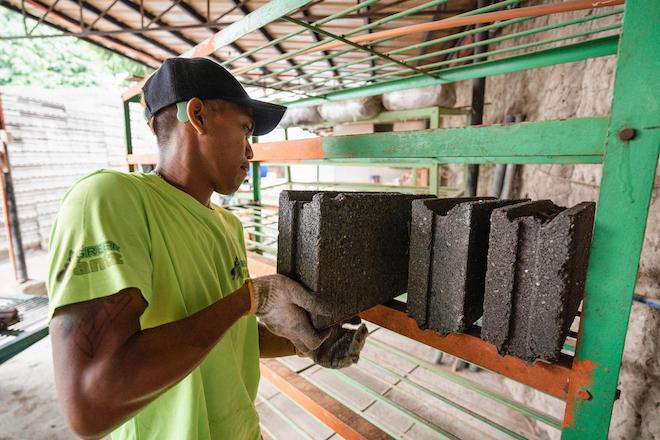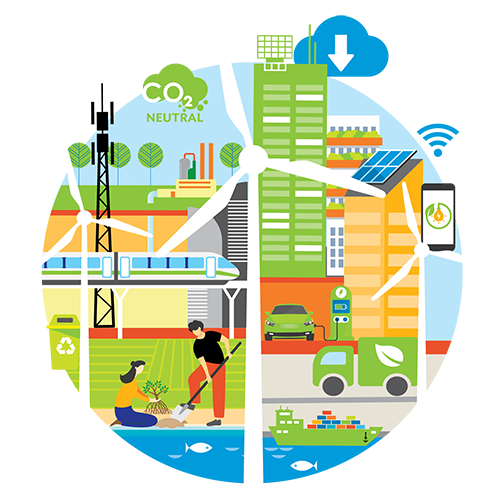
Impact startups are leading the way in providing affordable and sustainable housing solutions to low-income families in climate-vulnerable countries, including the Philippines.
A report by Habitat for Humanity International’s Terwilliger Center for Innovation in Shelter says their pioneering work may hold the key to not just making homes climate-resilient but also to decarbonizing the housing sector and achieving net-zero emission goals.
“Given that those who are most impacted by climate change are also those most affected by the global housing shortage, any measures to support climate change mitigation and adaptation must incorporate housing needs in order to succeed,” says the Net-Zero Homes report. “The significant contribution that the construction industry makes to global greenhouse gas emissions means that the sector, including housing, has a key role to play in climate change mitigation and adaptation, and the adoption of more sustainable inclusive practices.”
Unserved market
A study made by the Center for Research and Communication Foundation, Inc. for the Terwilliger Center in 2020 says there is growing demand for housing from low-income families in the Philippines, yet they are largely unserved by formal housing markets. They rely on their personal savings to build and improve their homes brick by brick when resources become available.
“Underprivileged homeowners build in increments, often with limited access to sound construction advice and quality, eco-friendly materials,” says the study’s summary. The houses are often poorly constructed and cannot withstand the impact of extreme weather, such as super typhoons that hit the country in increasing frequency and intensity.
“On the supply side, there’s a huge missed opportunity, as building products and services are not designed according to seasonal income streams, informal employment, or lack of land tenure. The startup community can play a key role in piloting new products and approaches related to housing finance, construction materials, services, and innovation to support the housing needs of low-income families,” it adds.
Circular economy solutions
Net-Zero Homes notes an increasing trend of startups in low-income countries and emerging markets that are using circularity strategies—use less, use longer, make clean, and use again—to develop sustainable housing materials that can substitute for traditional cement, concrete, and steel, which require large amounts of energy to produce.
In the Philippines, the report cites three social enterprises in the housing materials sector—Cubo Modular, Green Antz Builders, and Plastic Flamingo.
Cubo Modular uses engineered bamboo to make modular houses off-site. This demonstrates the “use less” strategy, which strives to make the building process more resource-efficient and to reduce material wastage. Cubo founder Earl Forlales won the Cities for our Future competition of the London-based Royal Institute of Chartered Surveyors (RICS) in 2018 for his use of bamboo as a low-cost sustainable material for affordable housing. According to the International Network for Bamboo and Rattan, bamboo is also known to sequester more carbon than other fast-growing tropical and sub-tropical trees.
Both Green Antz and Plastic Flamingo make building products from plastic waste, which is a serious problem in the country and in other parts of Southeast Asia. Their goal is to produce durable products that are designed for recyclability and sustainability.
Green Antz won Habitat’s 2019 ShelterTech Award at the Asia-Pacific Housing Forum. It collects and uses all kinds of plastics—from single-use sachets to hard-to-recycle materials—for making eco-bricks, pavers, pre-casts, and plastic-infused roads. It has partnered with local communities, corporates, and organizations, including the Terwilliger Center, which has helped the company scale its housing solutions.
Supported by a grant from the Singapore-based nonprofit Alliance to End Plastic, Plastic Flamingo’s Planks of Promise project makes upcycled plastic eco-lumbers or eco-boards.
Challenges and recommendations
However, many startups targeting the low-income housing market struggle to grow their business. For one thing, the target market tends to be price conscious and overlook the long-term value of investing in quality materials.
“In the beginning, [Green Antz] owner and founder Rommel Benig struggled to get the company’s products accepted by the low-income households that he hoped to help. He later transitioned the company to a higher segment of the market and partnered with local conglomerate Ayala. More recently, the company has been able to pivot back to the low-income segment and has succeeded in partnering with 10 hardware stores and three social housing developers to stock and use the company’s brick and paving products, particularly non-load bearing eco-cast for the low-income market,” the report says.
To bring circular housing innovations from the prototype stage to commercialization, Net-Zero Homes says there should be “a supportive innovation-enabling environment, including regulatory frameworks that call on innovators to decarbonize the construction sector, and facilitate and reward them for doing so.” There should also be “a concerted effort across the entire housing construction value chain, including big and established players” to support sustainable materials and practices.
In the Philippines, the national building code promotes climate-resilient infrastructure while the Philippine Green Building Code calls for efficient use of resources and minimizing negative environmental and health impact. “However, the building code is not applicable to the lowest income housing projects and thus a missed opportunity to incentivize sustainable practices throughout the construction industry,” the report notes.
Financing is also essential to scaling innovative housing solutions. Social enterprises need impact investors or green financing, while low-income families require financial products tailored to their needs.
“Access to end-user finance for low-income families to repair or refurbish their housing can extend the lifetime of the structure, while improving habitability and related outcomes, including health and education,” the report says. “Impact investment, risk sharing and technical assistance facilities—such as Habitat’s MicroBuild Fund and [Asian Development Bank’s] Microfinance Risk Participation and Guarantee Program—can help financial institutions develop loan products tailored to helping low-income families improve the quality and resilience of their homes. Financial solutions with preferential rates can also be tailored to incentivize access to and use of green or circular building solutions.”
It also cites the EDGE tool of International Finance Corporation (IFC), which helps developers get access to working capital financing through green building certification.

